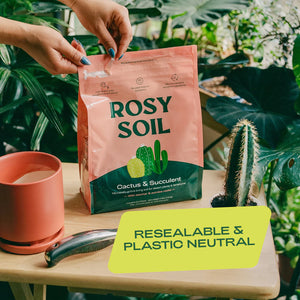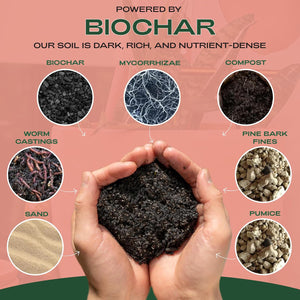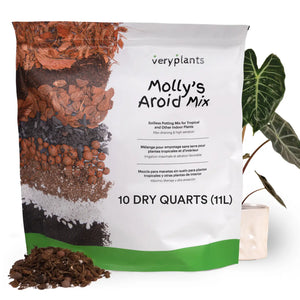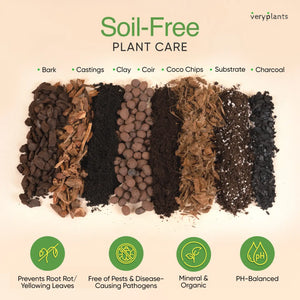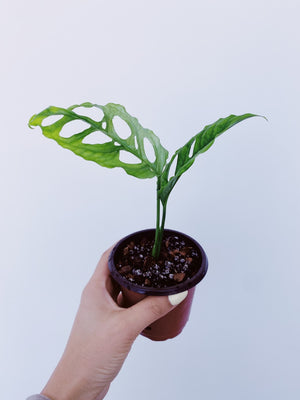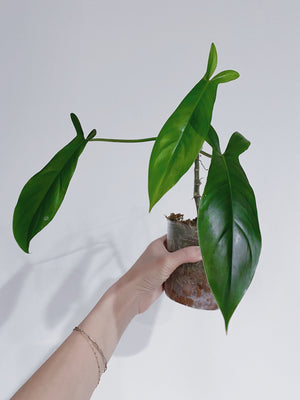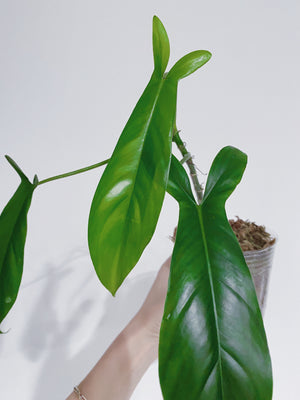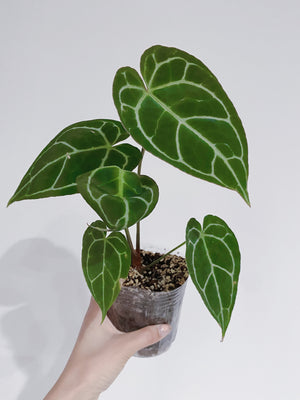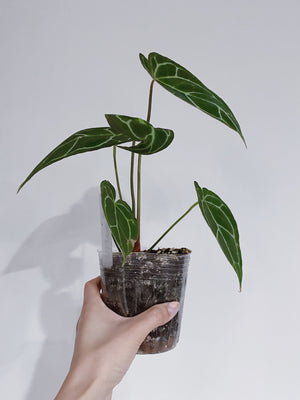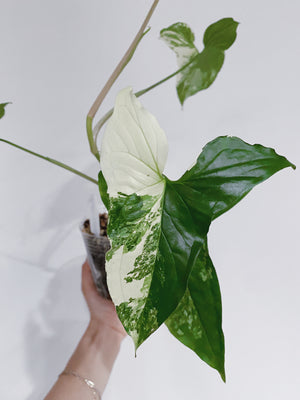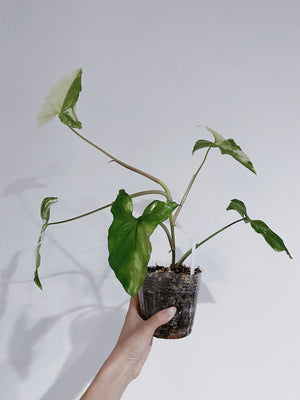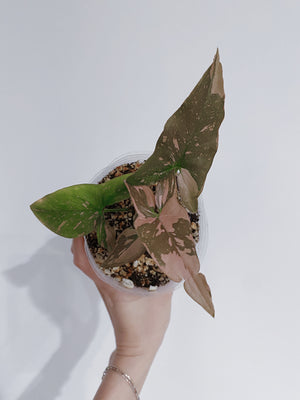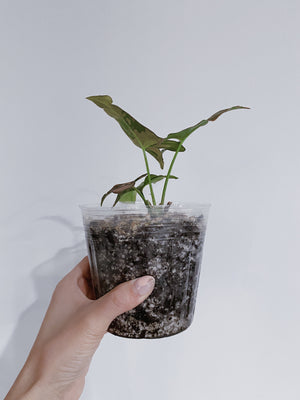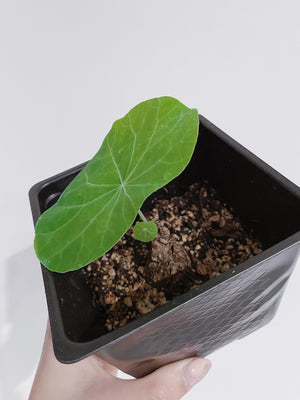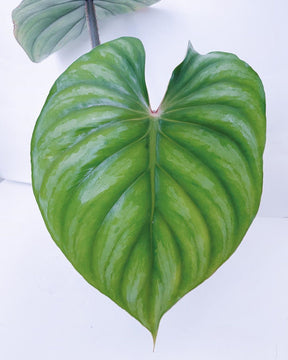Alocasia Polly: A Care Guide for the African Mask Plant
 Alocasia Polly: @RootedHues
Alocasia Polly: @RootedHues
Alocasias (more commonly known as elephant ears), come in dozens of varieties. The Alocasia Polly is a particular favorite among plant people of all experience levels.
And the reason is plain to see. Alocasia Pollys, also called African Masks, are coveted for their striking foliage and unique leaf patterns. Their deep green leaves appear nearly black in some lighting, and feature bright white striping along the leaves’ main veins and outer edge.
When grown outdoors in their native climate of the Philippines, they produce a green and white flower with red berries.
The leaves bear a resemblance to traditional African masks, hence their nickname. But there’s more to these plants than meets the eye. Let’s un-mask the African Mask plant!
All About Alocasias
Many houseplant lovers discover that not all houseplants (no matter how beautiful or exotic) are compatible with all homes. This is a major consideration for plant lovers with pets or children who may be at risk.
If you are considering adding a Polly to your houseplant collection, there are a few factors to consider first.
- Toxicity: Alocasias are a skin irritant to humans, and are highly toxic to cats, dogs, and horses. They should not be kept in homes with cats and dogs who may come in contact with the plants.
- Size: Alocasia Polly varieties grow to be 2 feet in height and width when mature.
- Care level: With very specific humidity and lighting needs, these plants can be tricky to care for adequately and are not recommended for beginners.
Alocasia Polly Requirements
Here’s what you’ll need to know to keep your African Mask plant happy and healthy!
Lighting
Alocasia Pollys require bright, diffuse lighting. Place them near a window where they will receive consistent indirect sunlight.
Humidity
Alocasias are native to a humid, tropical climate. Keep the polly’s soil moist and provide it in an area of high humidity, such as a bathroom.
You may also need a humidifier or pebble tray to keep the air humid, and prevent wilt and leaf curling or browning.
Temperature
Alocasia Pollys require warm temperatures year-round. They can tolerate heat fairly well if kept moist, but their preferred temperature range is the 70’s-mid 80’s. They may be harmed at temperatures below 60 degrees Fahrenheit.
Soil
African Masks require rich soil with good drainage. Peat moss or perlite can be added to the soil to ensure proper aeration, and shredded coconut husk will assist in retaining moisture.
Watering Schedule
Allow the top 2” of soil to dry completely between waterings. Misting your African Mask is important to maintain proper humidity and moisture. Using distilled water, mist the plant on a regular basis.
Alocasia Polly Care Tips
Once the African Mask plant has a sufficient environment established, there are a few additional tips that can help you prevent pests or disease and maintain the plant’s health.
Fertilizing
A water-soluble houseplant fertilizer can be applied periodically throughout the growing season, but should not be applied while the plant is dormant in winter.
Pruning
Pruning is only required if you notice yellowed or damaged leaves. These can be removed with pruning shears.
Repotting
African Masks prefer to be slightly pot-bound, and should not be re-potted very frequently. When re-potting, ensure that the new pot is no more than 2” larger than the current pot the Alocasia is in.
Alocacia Polly Propogation Guide
So you’ve decided to propagate your African Mask!
Because of the way these plants have babies, you can separate the rhizomes and start entirely new plants. (Of course, you can attempt to propagate from cuttings as well, but this method is less harmful to the plant and has a slightly higher success rate). You’ll want to do this in the spring, at the beginning of the growing season.
- Remove the entire plant from its pot (gently!).
- Carefully untangle the roots and remove a few of the new growth rhizomes.
- Re-pot the mother plant, and pot the babies. Keep them in the same environment as the mother, maintaining humidity and the watering schedule you use for the mother plant.
Soon, you’ll have new African Mask plants!
Pests and Problems
African Mask giving you trouble? With houseplants, it is incredibly important to “diagnose” issues and solve them quickly to prevent further damage.
These are some of the common ailments that could be affecting your Polly, and what you can do to address them.
Leaf Spotting
If you see discolored yellow or brown spots on your plant’s leaves, it is often due to the water purity (or impurity).
Water with distilled water instead to avoid spotting. Alternatively, allow tap water to sit at room temperature for 2-3 days to naturally distill it before watering your plants with it.
Pests
Scale insects are tiny insects that feed on plant sap and cause yellowing and disease.
Kill scale by picking the insects off of the plant, and/or using a cotton ball soaked in alcohol to rub on the insects which will kill them.
Spider mites are tiny bugs that are hard to see. They spin webs and attack houseplants. Prune any severely affected leaves/stems. Wipe down remaining leaves and stems with soapy water.
If you follow these tips and guidelines, you will be able to keep your African Mask plant happy and healthy for years to come!
Written by
Mary Studebaker-Reed

